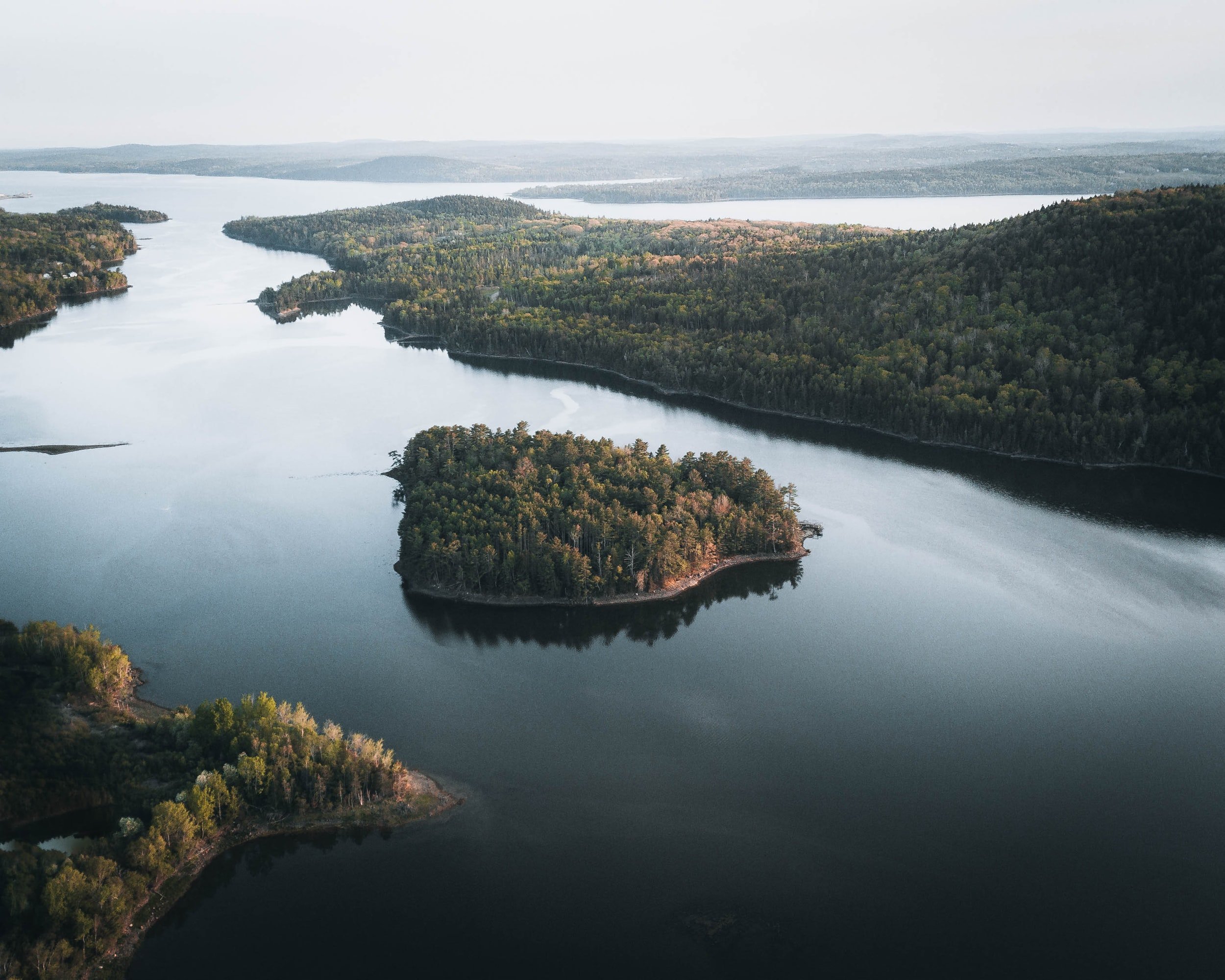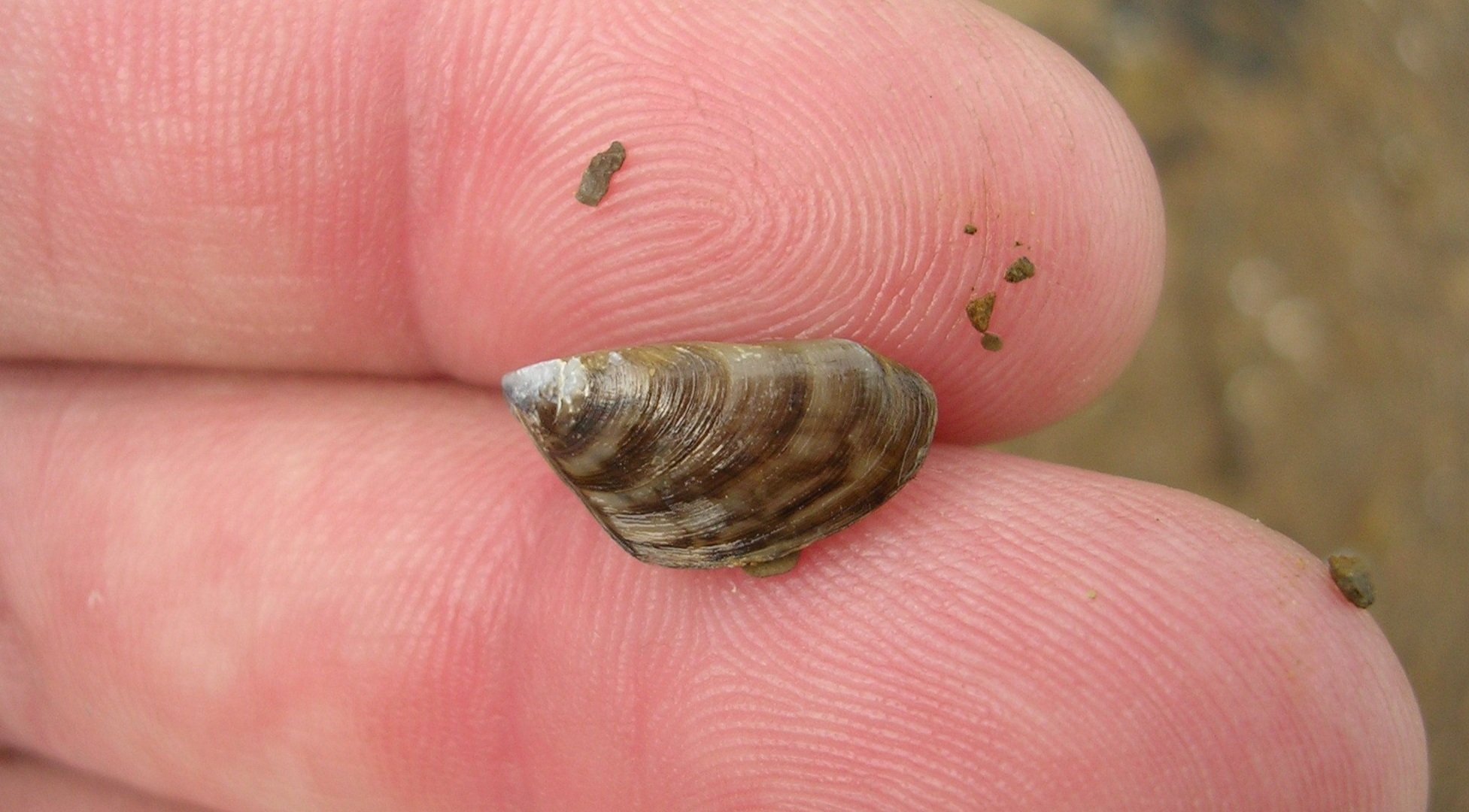
Invasive Species | Fish and Invertebrates
Zebra and Quagga Mussels
Photo: Randy Westbrooks, Bugwood.org
Zebra and Quagga Mussels
(Dreissena polymorpha, Dreissena bugensis)
French common name: la moule zébrée et la moule quagga
Recent Updates
September 14, 2023 - Adult mussels were found in the Madawaska River attached to a hydro-electric dam in Edmundston. This detection represents the first occurrence of this highly invasive freshwater mussel in the Maritimes.
For more information, visit: https://www.canada.ca/en/fisheries-oceans/news/2023/09/fisheries-and-oceans-canada-and-its-partners-confirm-the-arrival-of-zebra-mussels-an-aquatic-invasive-species-in-new-brunswick.html
October 2022: We are saddened to share that an established Zebra Mussel population has been discovered in Lac Témiscouata, just across the border into Québec, which flows into New Brunswick’s Madawaska River and then the Wolastoq (St. John) River. The situation is being monitored by respective government agencies and plans are being made to assess any spread beyond the lake. While no populations have been detected in New Brunswick to date, we ask that anyone spending time in the Madawaska or upper Wolastoq (St. John) River to keep an eye out and report any suspected sightings.
These two similar species reproduce rapidly and in extremely high numbers. They attach to surfaces using basal threads and can colonize areas with up to 700,000/m2. They drastically alter food webs and water chemistry, compete with native species for space and resources, and impact infrastructure like water in-take pipes and power plants. Mussels produce free-floating veligers (larvae) that float in the water column before attaching to available surfaces. and can be spread between waterbodies on hard surfaces like boat props and in standing water in bilge pumps, livewells, and on undried equipment. Clean, Drain, and Dry all equipment to prevent the spread of invasive Zebra and Quagga mussels in New Brunswick.
History
Zebra mussels (Dreissena polymorpha) are a small invasive freshwater mussel from southwestern Europe (specifically the Black and Caspian Seas) that first arrived in the Great Lakes in the1980s through infested ballast water that was discharged from ships. Since then, they have been spreading through eastern Canada and the United States impacting ecosystems, recreational activities, and infrastructure.
Identification
Photo: Dave Britton, US Fish & Wildlife Service
Size: very small; range in size from a few millimeters to 4cm. Much smaller than native mussel
Photo: Amy Benson, U.S. Geological Services, Bugwood.org
Shell: both species are triangular in shape. Colour ranges from white to dark brown, with zebra mussels having a zig-zag pattern.
Life cycle: mussels produce free-floating veligers (larvae) that float in the water column before attaching to available surfaces.
Habitat: freshwater environments, including lakes, rivers, and human-made waterbodies. Will colonize surfaces including rocks, boats, docks, other aquatic plant & animal species, and infrastructure such as water intake pipes.
Impacts
Zebra mussels are filter feeders that will attach themselves to any solid surfaces touching infested waterways, such as boats, docks, rocks, plants, and native mussels. The females can produce up to 1 million eggs per breeding season, and the free-swimming veligers (larvae) can float in the water column for up to a month before attaching to available surfaces, colonizing in densities of up to 700,000 individual mussels per m2.
The presence of zebra mussels can negatively impact freshwater ecosystems by:
Filtering water to the point where important food sources like plankton are depleted, which alters food webs. The over-filtering also creates clear water, allowing sunlight to penetrate deeper which can increase growth area of invasive aquatic plants like Eurasian Watermilfoil.
Increasing toxic algae blooms, pathogenic bacteria, avian botulism, which impacts fish and wildlife.
Altering spawning areas by changing the materials on the bottom on the waterways, which impacts fish egg survival
Since they are capable of heavily colonizing on various surfaces, they can also negatively impact recreational activities and vital infrastructure. Due to their razor-sharp shell, recreational users are at a risk of cutting their feet while walking on beaches or swimming in water infested by zebra mussels. These invasive mussels are also responsible for clogging intake structures used by water treatments facilities and power plants. The management of zebra mussels can also be costly for local government agencies. Between 2017 and 2019, municipalities in Ontario reported spending $4.5 million annually on the control, prevention, and detection of these mussels.
Report Zebra/Quagga Mussels
Zebra and Quagga mussels are currently found throughout Ontario, Quebec, and Manitoba. If you think you’ve discovered Zebra/Quagga mussels in New Brunswick:
Take photos
Note:
the exact location (GPS coordinates)
the observation date
identifying features
Contact NBISC and Fisheries and Oceans Canada to report:
NBISC
506-262-6247
Email: director@nbinvasives.ca
Fisheries and Oceans Canada
Toll-free: 1-866-759-6600
Email: DFO.GulfAquaticInvaders-EnvahisseursaquatiquesduGolfe.MPO@dfo-mpo.gc.ca
Resources:
CBC News article - “Invasive zebra mussels discovered in St. John River watershed in Quebec” (Oct. 8th, 2022): https://www.cbc.ca/news/canada/new-brunswick/zebra-mussels-detected-nb-watershed-1.6609571
Ontario's Invading Species Awareness Program - Zebra and Quagga Mussels



